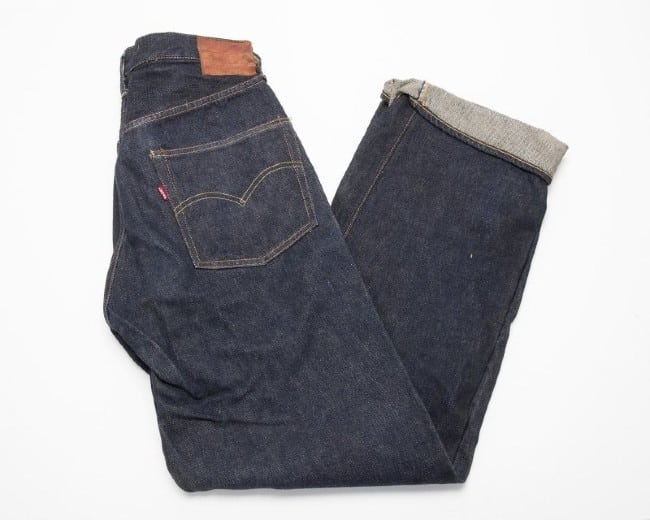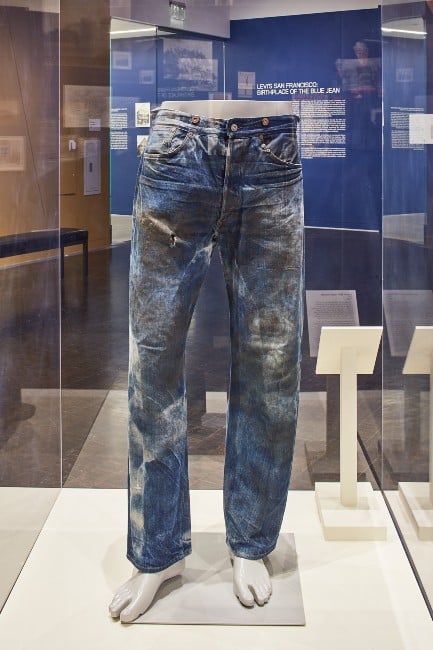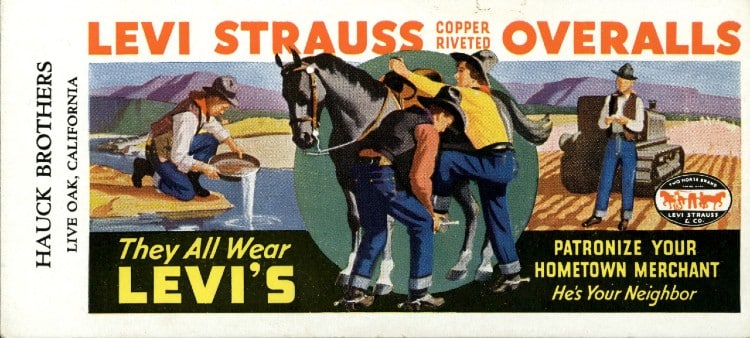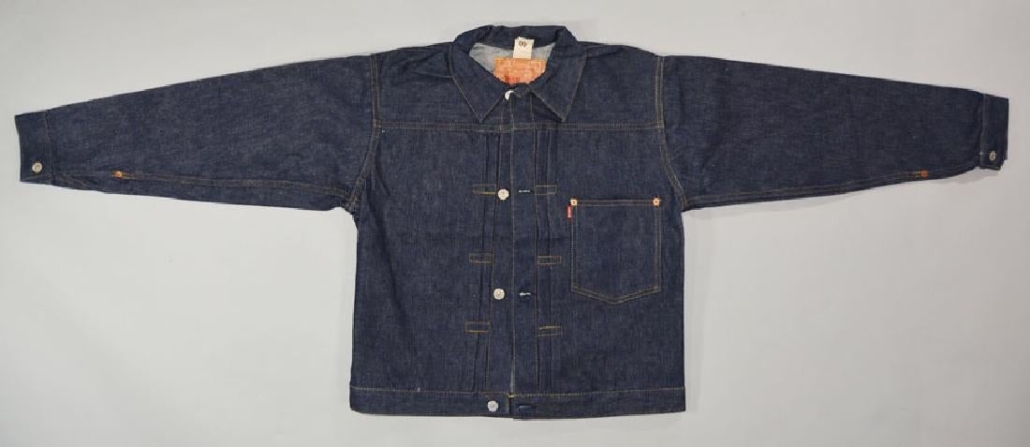
NEW YORK – Born in Bavaria in 1829, Levi Strauss immigrated to America in 1847 to join his two half-brothers in New York at their dry goods business. Six years later, he headed west during the California Gold Rush and set up a wholesale dry goods business in San Francisco, selling to small general stores in the area.
In 1872, Nevada tailor Jacob Davis wrote Strauss that he had invented a technique to strengthen work pants by affixing rivets to the pocket corners. He suggested that they work together, which they did, getting the technique patented. Made of denim and featuring Levi’s button fly front, these pants were not yet called blue jeans (that name came later) but were listed as “waist overalls.” Retailing for about $3 each, they featured the now-signature copper rivets that Levi’s jeans are famous for. Strauss marketed the pants toward miners and blue-collar workers who required durable clothing. Reportedly, the name blue jeans came from the denim’s color and the source of the material, Genoa, Italy.
This garment, the original Levi’s 501® jean, was simply called “XX” – an industry term signifying the highest quality as well as referring to the quality of denim the firm used. This first pair of their waist overalls had one back pocket; it was not until 1901 that Levi’s jeans boasted two back pockets.

For decades, Levi’s jeans were made only for men. That all changed in 1934 when Levi Strauss added blue jeans to its women’s clothing line called Lady Levi’s. Levi’s jeans have been a staple in closets for men, women and children ever since.
Blue jeans are perhaps unique in the fashion world. They are comfortable but also can be stylish. Made of denim, probably one of the most popular materials in the world, jeans are worn by young and old, from retail workers to Fortune 500 businessmen. There are few people who don’t own at least one pair. And while they have long been known as blue jeans, Levi’s jeans also come in white and black. Over time, their look has been updated. Their original suspender loops were discarded as men’s fashions changed, belt loops were added and the zipper front to replace the button fly was introduced in 1954. Levi’s jeans today offer a range of fit styles from relaxed and straight leg to skinny.

Levi’s jeans have several signature design elements that make them instantly recognizable. In 1886, the Two HorseTM® brand leather patch debuted on the pants as a symbol of their strength and to show the company’s prestige as the innovator of patent-riveted garments. That logo endures as one of the oldest continually used trademarks around the world.
Levi’s stitching is even unique. “Our back pocket stitching on Levi’s® jeans is what we call the Arcuate, a unique Levi’s® identifier that has been used on our jeans since they were first created in 1873,” according to the company’s website. Unfortunately, the meaning behind the origins of this bird-like (or bow-like) design are not known as early company records were destroyed in the Great San Francisco Earthquake and fire of 1906.

To further stand out from its competitors, Levi Straus added its iconic red tab with the Levi’s name on the back right pocket of its jeans in 1936. The tab still gets stitched there today, and the stitching style can help date the jeans. Until 1971, the company printed LEVI’S in all capital letters (known as the Big E) using white thread. After that year, they reverted to smaller letters with only a capital “L”. Many die-hard collectors seek out original “Big E” pants. Some of these can bring big money, sometimes over $10,000. Jean jackets are also highly desirable and a rare 1940s Levi Strauss & Co. 506 jacket attained $31,750 in April 2019 at Daniel Buck Auctions Inc.
Levi’s are firmly rooted in pop culture and society. Picture Bruce Springsteen wearing a pair of chinos instead of the Levi’s 501 jeans he wore for the iconic album cover of Born in the U.S.A. It would not be the same. Blue jeans are museum-worthy too and at the Contemporary Jewish Museum in San Francisco through August 2020 is the largest public showing of the company’s archival materials ever put together in one place. “Levi Strauss: A History of American Style” tells the story of Levi Strauss’ life and his world-famous blue jeans. More than 250 artifacts are in the exhibition (which is available online), ranging from blue jeans and garments to ads, photos and ephemera. “Marketed as hard-working, authentic and effortlessly cool, Levi’s® fashioned an American identity defined by style,” a museum press release stated.

When buying a vintage pair, keep in mind that denim shrinks and modern clothes are often vanity sized, meaning a pair marked 30 inches likely fits a 32-inch waist. So, when buying vintage, one should deduct about two inches from the listed size to determine the correct size for the modern wearer.
Nearly 150 years later, Levi’s appeal to collectors for the same reasons they did when they were first made. Levi’s have been part of the surf culture, hippie and counterculture movements and have long defined the American ethic of hard work, quality and authenticity.


